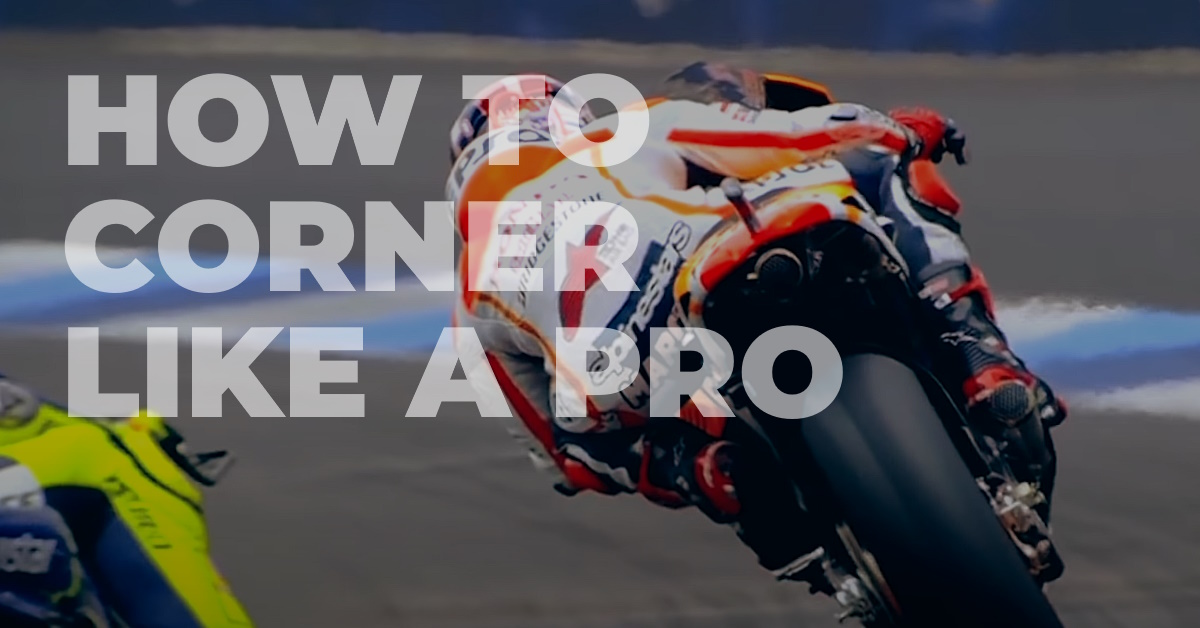Navigating corners on a motorcycle can be a thrilling experience, but for beginners, it’s essential to understand and master the art of cornering safely and confidently. This guide breaks down various cornering techniques in simple terms, helping new riders develop their skills and enjoy their rides to the fullest.
You may not need to learn all these different styles of cornering. Most of us are commuters, and occasionally take a longer ride with friends, perhaps. But if you consider yourself a serious motorcyclist, you should at least know all the different ways you can corner.
You can also watch the embedded videos for a detailed look at different ways of cornering.
Standard Cornering
This is the basic form of cornering suitable for everyday riding. To do this, lean your body slightly into the turn, while keeping the bike not too tilted. Use a mix of turning the handlebar and shifting your body to steer through the turn at a comfortable speed.
Counter Steering
At higher speeds, counter steering is key. To turn left, gently push the left handlebar forward. This will make the bike lean left and turn left. It sounds counterintuitive, but it’s how you initiate a turn at speed.
Knee-Down Cornering
Popular in sporty riding, this style lets you take corners at higher speeds. Move your body off the bike towards the inside of the turn, extending your inside knee down towards the ground.
This technique reduces the need for the bike to lean too much.
Trail Braking
Trail braking involves slowing down into the turn, not just before it. This helps in controlling speed and can also help change the bike’s direction mid-turn. It’s a delicate balance between using the brakes and steering into the corner.
Late Apex Cornering
Here, you turn into the corner later than the middle of the turn. This allows a straighter line when exiting the turn, helping with earlier acceleration. It’s useful on unfamiliar roads or where you can’t see much of the turn ahead.
Early Apex Cornering
This involves turning in sooner and reaching the closest point to the inside of the turn early. It’s often safer for beginners as it gives more time to see and react to any surprises. However, be careful as it might lead to running wide on the exit.
Off-Camber Cornering
Off-camber turns have a surface that slopes away from the turn, making them tricky due to less grip. Approach these turns slower, with less lean, and be very smooth with your controls.
Decreasing Radius Cornering
These are turns that get tighter as you go. Approach with caution, be ready to slow down more as you progress through the turn, and use good control of the throttle.
Increasing Radius Cornering
In these turns, the curve opens up as you go. This allows you to gradually increase your speed and lean as you exit the turn, making it a good chance to accelerate.
Wet Weather Cornering
Wet conditions mean less grip. Keep the bike more upright, use slow and smooth movements, and be extra careful with how you steer, brake, and accelerate.
Dirt Road Cornering
For loose surfaces like on dirt roads, you might need to stand up on the foot pegs, shift your weight around, and sometimes slide the bike intentionally. Control of the throttle and where you put your weight is very important here.
Adventure Bike Cornering
On bigger, heavier bikes, like adventure bikes, balance and smooth handling are vital. The techniques often combine road and off-road styles, adjusted for the bike’s size and weight.
For beginners, start with basic cornering and gradually work your way up to more advanced techniques. Practice in safe places and consider professional training. Remember, being smooth and in control is more important than speed, especially when you’re just starting out. Enjoy your rides, and stay safe on the roads!





![Mile Munchers: Can Ola S1 X [3kWH] Outshine the Best-Selling Hero Splendor Plus?](https://www.cartoq.com/wp-content/uploads/2024/06/hero-splendor-vs-ola-s1x-featured-253x131.jpg)
![Actress Shruti Haasan Buys A Swanky BMW 7 Series Worth Rs 2 Crore [Video]](https://www.cartoq.com/wp-content/uploads/2024/07/shruti-haasan-bmw-7-series-253x131.jpg)
